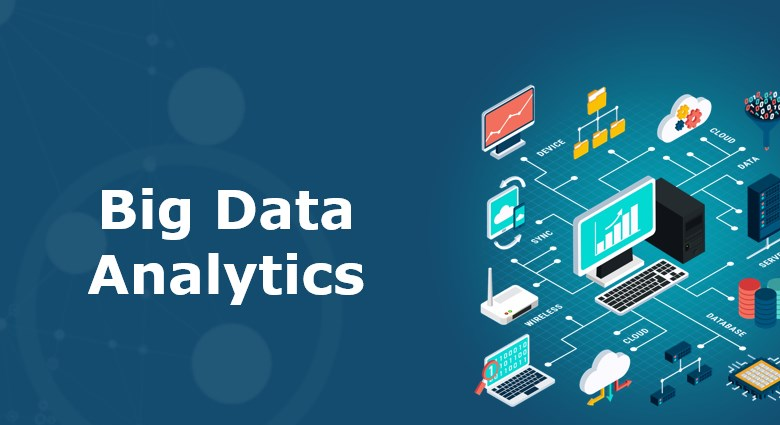Big data analytics is the use of advanced analytic techniques against very large, diverse data sets that include structured, semi-structured and unstructured data, from different sources, and in different sizes from terabytes to zettabytes.
Industry influencers, academicians, and other prominent stakeholders certainly agree that Big Data has become a big game-changer in most, if not all, types of modern industries over the last few years.
As Big Data continues to permeate our day-to-day lives, there has been a significant shift of focus from the hype surrounding it to finding real value in its use.
While understanding the value of Big Data continues to remain a challenge, other practical challenges, including funding and return on investment and skills, continue to remain at the forefront for several different industries that are adopting Big Data.
What is big data analytics?

Big data analytics refers to the methods, tools, and applications used to collect, process, and derive insights from varied, high-volume, high-velocity data sets. These data sets may come from a variety of sources, such as web, mobile, email, social media, and networked smart devices, writes in Microsoft Research.
They often feature data that is generated at a high speed and varied in form, ranging from structured to semi-structured to unstructured.
Traditional forms of data analysis software aren’t equipped to support this level of complexity and scale, which is where the systems, tools, and applications designed specifically for big data analysis come into play.
Why is big data analytics important?

Now you know what big data analytics is. But why does it matter? And most importantly, how can the understanding and use of big data assist us?
Data is woven into the everyday fabric of our lives.
With the rise of mobile, social media, and smart technologies associated with the Internet of Things (IoT), we now transmit more data than ever before—and at a dizzying speed.
Thanks to big data analytics, organizations can now use that information to rapidly improve the way they work, think, and provide value to their customers. With the assistance of tools and applications, big data can help you gain insights, optimize operations, and predict future outcomes.
This ability to derive insights to inform better decision making is why big data is important. It’s how a retailer might hone their targeted ad campaigns, or how a wholesaler might resolve bottlenecks in the supply chain. It’s also how a health care provider might discover new options for clinical care based on patient data trends. Big data analytics enables a more holistic, data-driven approach to decision-making, in turn promoting growth, efficiency, and innovation.
Now that you know the importance of big data, as well as the importance of data analytics, let’s dive into how big data analytics works.
How does big data analytics work?

Analytics solutions glean insights and predict outcomes by analyzing data sets. However, in order for the data to be successfully analyzed, it must first be stored, organized, and cleaned by a series of applications in an integrated, step-by-step preparation process:
- Collect. The data, which comes in structured, semi-structured, and unstructured forms, is collected from multiple sources across web, mobile, and the cloud. It is then stored in a repository—a data lake or data warehouse—in preparation to be processed.
- Process. During the processing phase, the stored data is verified, sorted, and filtered, which prepares it for further use and improves the performance of queries.
- Scrub. After processing, the data is then scrubbed. Conflicts, redundancies, invalid or incomplete fields, and formatting errors within the data set are corrected and cleaned.
- Analyze. The data is now ready to be analyzed. Analyzing big data is accomplished through tools and technologies such as data mining, AI, predictive analytics, machine learning, and statistical analysis, which help define and predict patterns and behaviors in the data.
Big data analytics uses and examples
Today, many major industries use different types of data analysis to make more informed decisions around product strategy, operations, sales, marketing, and customer care. Big data analytics makes it possible for any organization that works with large amounts of data to derive meaningful insights from that data. Here are just a few real-life applications out of many:
- Product development. Big data analytics helps organizations define what their customers want by unearthing their needs through large volumes of business analytics data, steering feature development and roadmap strategy.
- Personalization. Streaming platforms and online retailers analyze user engagement to create a more personalized experience in the form of recommendations, targeted ads, upsells, and loyalty programs.
- Supply chain management. Predictive analytics define and forecast all aspects of the supply chain, including inventory, procurement, delivery, and returns.
- Healthcare. Big data analytics can be used to glean key insights from patient data, which helps providers discover new diagnoses and treatment options.
- Pricing. Sales and transaction data can be analyzed to create optimized pricing models, which helps companies make pricing decisions that maximize revenue.
- Fraud prevention. Financial institutions use data mining and machine learning to mitigate risk by detecting and predicting patterns of fraudulent activity.
- Operations. Analyzing financial data helps organizations detect and reduce hidden operational costs, in turn saving money and increasing productivity.
- Customer acquisition and retention. Online retailers use order history, search data, online reviews, and other data sources to predict customer behavior, which they may use to build better retention.
Big data analytics refers to the process of analyzing complex data sets in order to make more informed decisions around the way they work, think, and provide value to their customers. It is often characterized by data sets that are high in volume, variety, and velocity, which traditional forms of data analysis aren’t able to handle.
Today, data is being generated at an unprecedented scale and speed. With big data analytics, organizations across a wide range of industries can now use this influx of information to gain insights, optimize operations, and predict future outcomes, in turn promoting growth.
Big data analytics uses a variety of tools and technologies that work together to collect, process, clean, and analyze data. Depending on your infrastructure, this may include distributed storage frameworks, non-relational databases, data lakes and warehouses, in-memory data processing, data mining tools, and tools for predictive analytics.
Any organization that works with large amounts of data can benefit from a scalable analytics solution, which is why many major industries, including retail, entertainment, and healthcare, already use big data to define strategy, reduce costs, and anticipate customer needs.
Types of Big Data Analytics

There are four main types of big data analytics: diagnostic, descriptive, prescriptive, and predictive analytics. They use various tools for processes such as data mining, cleaning, integration, visualization, and many others, to improve the process of analyzing data and ensuring the company benefits from the data they gather.
1. Diagnostic analytics
Diagnostic analytics is one of the more advanced types of big data analytics that you can use to investigate data and content. Through this type of analytics, you use the insight gained to answer the question, “Why did it happen?”. So, by analyzing data, you can comprehend the reasons for certain behaviors and events related to the company you work for, their customers, employees, products, and more.
Big data analytics examines large amounts of data to uncover hidden patterns, correlations and other insights. With today’s technology, it’s possible to analyze your data and get answers from it almost immediately – an effort that’s slower and less efficient with more traditional business intelligence solutions.
Let’s say there has been a drastic change in a product’s sale even though you have not made any marketing changes to it. You would use diagnostic analytics to identify this anomaly and find the casual relationship for such a change. Some tools and techniques used for such a task include: searching for patterns in the data sets, filtering the data, using probability theory, regression analysis, and more.
Diagnostic analytics benefits
The benefits of diagnostic analytics include a better understanding of your data and various ways to find the answers to company questions. This type of analytics enables businesses to understand their customers by using tools for searching, filtering, and comparing the data produced by individuals.
2. Descriptive analytics
Descriptive analytics is one of the most common forms of analytics that companies use to stay updated on current trends and the company’s operational performances. It is one of the first steps of analyzing raw data by performing simple mathematical operations and producing statements about samples and measurements. After you identify trends and insight with descriptive analytics, you can use the other types of analytics to learn more about what causes those trends.
You will need to use descriptive analytics when dealing with finance, production, and sales. Some tasks that require this type of analytics include the production of financial reports and metrics, surveys, social media initiatives, and other business-related assignments.
Descriptive analytics benefits
Descriptive analytics offers many benefits. One of its main benefits, however, is that it helps companies make sense of the large amounts of raw data they gather by focusing on the more critical areas. Descriptive analytics has changed the way companies do business. Nowadays, they use this type of analytics to understand their current business situation better in comparison to the past. It is a crucial step in data analytics, and without it, it would be impossible to anticipate any future trends or make data-driven decisions.
3. Prescriptive analytics
Prescriptive analytics takes the results from descriptive and predictive analysis and finds solutions for optimizing business practices through various simulations and techniques. It uses the insight from data to suggest what the best step forward would be for the company.
Prescriptive analytics benefits
Some benefits of prescriptive analytics include improving processes, campaigns, strategies, production, and customer service. By using statistics and modeling, this type of analytics helps manufacturers better understand the market and anticipate its condition in the future. It also assists them in setting their priorities straight and seeing what course of action can lead to greater financial gains.
4. Predictive analytics
As the name suggests, this type of data analytics is all about making predictions about future outcomes based on insight from data. In order to get the best results, it uses many sophisticated predictive tools and models such as machine learning and statistical modeling.
Predictive analytics is one of the most widely used types of analytics today. The market size and shares are projected to reach $10.95 billion by 2022, growing at a 21% rate for six years.
Predictive analytics benefits
The main benefit of predictive analytics is the reliable and more accurate forecast of the future. Through the predictions made with this type of analytics, companies can find ways to save and earn money, manage shipping schedules, and stay on top of inventory requirements.
Using predictive analytics in the marketing department can help organizations attract new customers and retain the old ones. By analyzing the customer’s data or the current trends, companies can anticipate the customer’s needs.
Big Data Applications Examples
Here is the list of the top 10 industries using big data applications:
- Banking and Securities
- Communications, Media and Entertainment
- Healthcare Providers
- Education
- Manufacturing and Natural Resources
- Government
- Insurance
- Retail and Wholesale trade
- Transportation
- Energy and Utilities
The Securities Exchange Commission (SEC) is using Big Data to monitor financial market activity. They are currently using network analytics and natural language processors to catch illegal trading activity in the financial markets.
……………………
Edited & fact-checked by Oleg Parashchak – Editor-in-Chief Beinsure Media, CEO Finance Media Holding.








